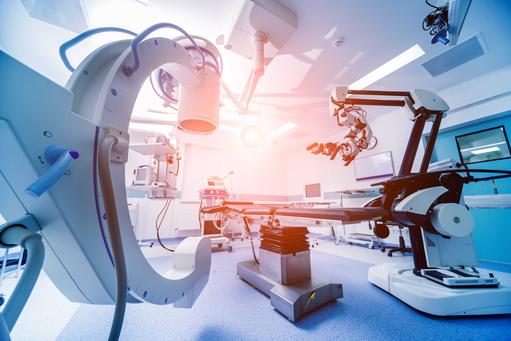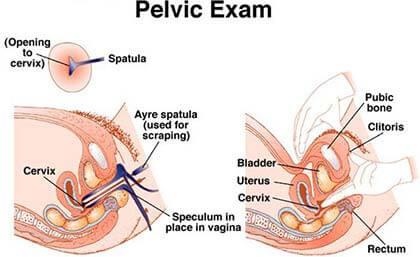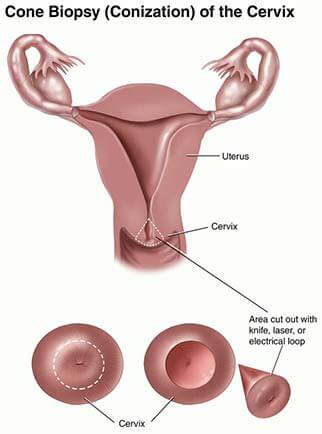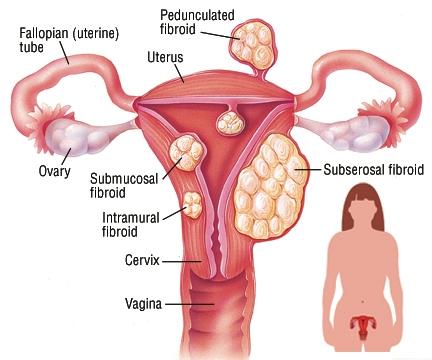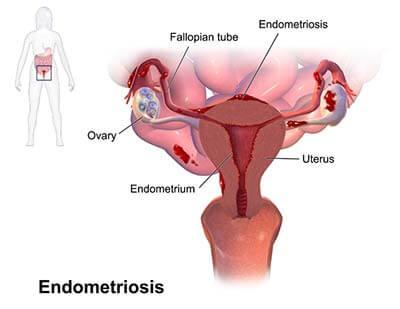- Since 2000 healthcare has been transformed by genomics, AI, the internet, robotics, and data-driven solutions
- Traditional providers, anchored in outdated technologies, struggle to keep pace with the evolving healthcare landscape
- Over the next two decades anticipate another seismic shift, bringing further disruptions to medical technology and healthcare delivery
- In the face of this imminent transformation, risk-averse leaders may cling to outdated portfolios, showing little interest in adapting to a 2040 healthcare ecosystem
- Providers must decide; embrace change now and thrive in a transformed healthcare landscape, or stick to the status quo and risk losing value and competitiveness
Healthcare 2040
Abstract
By 2040, the landscape of healthcare will have undergone a seismic shift, discarding antiquated models in favour of cutting-edge AI-genomic-data-driven approaches that will radically change both medical technology and healthcare delivery. This transformation signifies a departure from the conventional one-size-fits-all system, ushering in an era of targeted therapies grounded in molecular-level insights that challenge entrenched healthcare paradigms. The evolving healthcare narrative emphasises prevention, wellbeing, personalised care, and heightened accessibility. This departure from the norm is not a trend but a significant reconfiguration, where the fusion of biomedical science, technology, and expansive datasets merge to facilitate early detection and proactive interventions. This not only deepens our comprehension of diseases but also elevates the efficacy of therapies. At the core of this transformation is the empowerment of individuals within a framework that champions choice and fosters virtual communities. Genetic advancements, far from just addressing hereditary conditions, play an important role in enhancing diagnostic accuracy, optimising patient outcomes, and fundamentally shifting the focus from reactive diagnosis and treatment to a proactive commitment to prevention and holistic wellbeing. The indispensable roles played by genomics and AI-driven care in reshaping healthcare are not isolated occurrences; they will catalyse the emergence of new data-intensive R&D enterprises, which are poised to redefine the healthcare landscape against a backdrop of multifaceted influencing factors. Successfully navigating this transformative period necessitates a distinct set of capabilities and strategic alignment with an envisioned 2040 healthcare environment.
Providers find themselves at a crossroads, confronted with a choice: adapt and thrive or risk losing value and competitiveness in a rapidly evolving landscape. Recognising potential resistance to change and the scarcity of pertinent capabilities, leaders of traditional enterprises must acknowledge that immediate strategic action is not just beneficial but a prerequisite for success in the redefined healthcare ecosystem of 2040. The urgency of this call to action cannot be overstated, as the window of opportunity for adaptation narrows with each passing moment.
In this Commentary
This Commentary aims to help healthcare professionals to strategically reposition their organizations for success in the next two decades. Leaders must evaluate their strengths and weaknesses in the context of an envisioned future and implement strategies to align their organisations with the demands of a rapidly changing health ecosystem. Failure to do so will dent enterprises’ competitiveness and threaten their survival. Leaders should anticipate and address resistance to change among executives with a preference for the status quo. The Commentary has two sections: Part 1, Looking Back 20 Years, describes the scale and pace of change since 2000 and emphasises how genomics, the internet, AI, digitalization, data-driven solutions, robotics, telehealth, outpatient services, personalised care, ubiquitous communications, and strategic responses to demographic shifts have transformed medical technology and healthcare delivery. Part 2, Looking Forward 20 Years, seeks to stimulate discussions about the future of healthcare. While we highlight a range of factors positioned to impact medical technology and healthcare deliver in the future, we emphasise the significance of genomics, varied and vast datasets, and AI. We suggest the emergence of specialised agile, AI-driven research boutiques with capabilities to leverage untapped genomic, personal, and medical data. The proliferation of such entities will oblige traditional healthcare enterprises to reduce their R&D activities and concentrate on manufacturing. Over the next 20 years, anticipate an accelerated shift towards patient-centric, cell-based prevention and wellbeing care modalities, large hospitals replaced with smaller hubs of medical excellence, the rapid growth of outpatient centres, and the acceleration of home care and care-enabled virtual communities. The future dynamic healthcare ecosystem necessitates stakeholders to change immediately if they are to survive and prosper. Takeaways posit a choice for healthcare leaders: either stick to the status quo and risk losing value and competitiveness or embrace change and stay relevant.
Part 1
Looking Back 20 Years
Reflecting on the past two decades shows the rapid evolution and interplay of factors shaping medical technology and healthcare delivery. Appreciating the speed and scale of change helps to envision the future. Factors such as genomics, the Internet, AI, robotics, digitalisation, data-driven health solutions, telehealth, outpatient services, home care, personalised wellbeing, ubiquitous personal telephony, and strategic responses to demographic shifts have all influenced medical technology and healthcare delivery and will continue to do so in the future. Here we describe a few of these factors.
The completion of the Human Genome Project in 2003 was a pivotal moment in the direction of medical advancement, laying the foundations for the emergence of genomics. Genomics, encapsulating the mapping, sequencing, and analysis of DNA, is a pivotal tool for unravelling molecular information, variations, and their implications in both traits and diseases. This achievement not only transformed biomedical research but also changed healthcare, shifting it from a generic one-size-fits-all approach to finely tuned care tailored to the unique genetic makeup of individuals.
Over the past two decades, the decoding of the human genetic blueprint has provided unprecedented insights into diseases at the molecular level, triggering a paradigm shift in medicine. This ushered in an era of personalised and precision approaches to diagnoses, treatments, and prevention. From the advent of targeted therapies to the implementation of genetic screening, genomic research has had a transformative influence and is positioned to continue its impact on healthcare.
Indeed, genomic testing has become a standard practice, and US Food and Drug Administration (FDA)-approved genomic care modalities have advanced medicine. For example, pharmacogenonics tailors drug treatments to individual patients by utilising genetic information, with FDA-approved tests for specific biomarkers that predict medication responses. Hereditary assessments evaluate an individual's cancer risk based on genetic makeup, such as identifying BRCA gene mutations linked to elevated risks of breast and ovarian cancers. Gene expression profiling analyses a patient's tumour genetics to guide targeted cancer therapies, with FDA-approved companion diagnostic tests for specific cancer treatments. Carrier testing identifies genetic mutations that could be passed on to children, which contribute to family planning and prenatal care. Pharmacodiagnostic tests help pinpoint patients that would benefit from specific drug treatments, predicting responses, especially in cancer therapies.
In 2012, the UK government inaugurated Genomics England, an initiative designed to spearhead the 100,000 Genomes Project, which aimed to sequence the genomes of 100,000 patients with infectious diseases and specific cancers. The project’s goals included the enhancement of our understanding of various genetic factors in diseases, the facilitation of targeted treatments and establishing a framework for the integration of genomics into everyday clinical practice. The successful completion of the project in 2018, provided a basis for genomic medicine and a deeper understanding of the genetic framework influencing health and disease.
In addition to genomic data, since 2000, there has been a significant increase in health-related data, driven by the proliferation of electronic health records (EHRs), developments in information management technologies, initiatives to improve healthcare efficiency, and enhanced communications among stakeholders. The growth in data has, in turn, created opportunities for the utilisation of AI and machine learning (ML) algorithms. Over the last two decades, AI has changed medical technology and healthcare delivery by enhancing diagnostics, personalising treatment plans, streamlining administrative tasks, and facilitating research through efficient data analysis, which has improved patient outcomes, and advanced the field. As of January 2023, the FDA has approved >520 AI and ML algorithms for medical use, which are primarily related to the analysis of medical images and videos. Indeed, the rise of algorithms has transformed healthcare, with many of them focusing on predictions using EHRs that do not require FDA approval.
In addition to EHRs there has been the evolution of wearable technologies like the Apple Watch and Fitbit, which have transformed personal health. Initially focusing on fitness tracking, these devices have expanded to monitor an array of health metrics. Over the years, they have amassed vast amounts of personalised data, ranging from activity levels to heart rate patterns. These data reservoirs are a goldmine for healthcare and wellbeing strategies, enabling individuals, healthcare professionals and providers to gain unprecedented insights into health trends, customised care routines, and the early detection of health issues. This combination of technology and health data has created opportunities for proactive healthcare management and personalised wellbeing interventions.
Targeted medicine not only benefitted from AI but also from personalised telephony, which experienced a significant boost in the early 2000s by the widespread internet access in households across the globe. The period was marked by the introduction of the iPad in 2001, closely followed by the launch of the iPhone. These innovations triggered widespread smartphone use and accessible internet connectivity, laying the foundations for the emergence of telehealth and telemedicine. In the early 2000s, global cell phone subscriptions numbered ~740m. Today, the figure is >8bn, surpassing the world's population. This increase was driven by the proliferation of broadband, the evolution of mobile technologies and the rise of social media, all contributing to the ubiquitous presence of the internet. By the 2010s, the internet had integrated into the daily lives of a substantial portion of the global population. Initially, in 2000, ~7% of the world’s population had access online. Contrastingly, today, >50% enjoy internet connectivity. In a similar vein, broadband access in American homes has surged from ~50% in 2000 to >90% in the present day. Personal telephony has evolved into an omnipresent force, and has become an integral part of billions of lives, actively enhancing health and wellbeing on a global scale. After 2010, patient-centric wellbeing evolved and later was helped by Covid-19 pandemic lockdowns, with telehealth and telemedicine offering remote consultations and treatments, empowering patients, and emphasising shared decision-making between healthcare providers and patients.
On a more prosaic level, consider how robotics has changed surgery over the past two decades by offering enhanced precision, reduced invasiveness, and improved recovery times. The use of robotic systems, like the da Vinci Surgical System, which gained FDA-approval in 2000, has allowed surgeons to perform complex procedures with greater accuracy. Between 2012 and 2022, the percentage of surgical procedures using robotic systems rose from 1.8% to 17%. Robotic surgery is becoming increasingly popular, with an annual growth rate of ~15%. In 2020, its global volume was 1.24m, with the US accounting for >70% of all robotic surgeries.
The shifting demographics over the past few decades, marked by decreasing birth rates, prolonged life expectancy, and immigration, has transformed prosperous industrial economies, resulting in a substantial rise in the proportion of the elderly population. For instance, in the US in 2000, there were ~35m citizens ≥65; today, this figure has risen to ~56m, ~17% of the population. Concurrently, there has been an increase of chronic lifetime illnesses such as heart disease, diabetes, cancer, and respiratory disorders. In 2000, ~125m Americans suffered from at least one chronic condition. Today, this figure has increased to ~133m - ~50% of the population. Simultaneously, there is a shrinking pool of health professionals. Research suggests that by 2030, there will be ~5m fewer physicians than society will require. This, together with ageing populations, the growing burden of chronic diseases and rising costs of healthcare globally are challenging governments, payers, regulators, and providers to innovate and transform medical technology and healthcare delivery.
Part 2
Looking Forward 20 Years
This section aims to encourage healthcare professionals to envision the future. Over the next two decades, medical technology and healthcare delivery are likely to be affected by numerous interconnected factors, which include: (i) continued progress in AI and ML, internet of things (IoT), robotics, nanotechnology, and biotechnology, (ii) advances in genomics, (iii) increasing availability of multi-modal data (genomics, economic, demographic, clinical and phenotypic) coupled with technology innovations, (iv) accelerated adoption of telemedicine and virtual monitoring technologies, (v) changes in healthcare regulations, (vi) an increase of patient-cantered care and greater patient involvement in decision-making, (vii) emerging infectious diseases, antimicrobial resistance, and other global health issues, (viii) Investments in healthcare infrastructure, both physical and digital, (ix) an evolving and shrinking healthcare workforce, including the further integration of AI technologies and changes in roles, (x) economic conditions and healthcare funding, (xi) the ethical use of technology, privacy concerns, and societal attitudes towards healthcare innovations, and (xii) environmental changes and their impact on health and wellbeing. Such factors and their interconnectivity are expected to drive significant healthcare transformation over the next two decades. Healthcare systems throughout the world are tasked with: (i) improving population health, (ii) enhancing patients’ therapeutic journeys and outcomes, (iii) strengthening caregivers’ experience and (iv) reducing the rising cost of care. There appears to be unanimous agreement among healthcare leaders that these goals will not be achieved by business as usual.
In November 2023, BTIG, a leading global financial services firm, organised its Digital Health Forum, bringing together >30 healthcare companies that offer a diverse range of products and services. During the event, executives discussed business models, reimbursement, and commercial strategies, and unanimously agreed that: "The market is primed for the mainstream integration of digital diagnostics and therapeutics." Here we focus on the anticipated accelerated convergence of genomics and AI technologies, and foresee the emergence of agile, AI-driven R&D boutiques as key players in reshaping medical technology and healthcare delivery.
These dynamic research entities thrive on the power of data. Currently, ~79% of the hospital data generated annually goes untapped, and medical information is doubling every 73 days. This emphasises the vast latent potential within these repositories. Traditional enterprises and healthcare professionals, constrained by a dearth of data management capabilities, have struggled to unlock the full potential inherent in these vast stores of information. By contrast, the adept data processing capabilities of these new innovative enterprises position them strategically to harness untapped data sources, extracting valuable insights into disease states and refining treatment modalities. Moreover, they boast advanced technology stacks, seamless connections between semiconductors, software, and systems, and are well-prepared to leverage specialised generative AI applications as they emerge in the market. Armed with cutting-edge technology and extensive datasets, they stand ready to enhance diagnostic precision, streamline treatment approaches, and reduce overall healthcare costs. Private equity firms will be eager to invest in these disruptive AI start-ups, anticipating M&A activities focused on specific therapeutic areas that will make them appealing to public markets.
These innovative entities are set to expedite the introduction of disruptive solutions, improve patients' therapeutic journeys, and optimise outcomes while driving operational efficiencies. Anticipate them to overshadow their traditional counterparts, many of which have outdated legacy offerings and historically have treated R&D as small adjustments to existing portfolios. Given that many conventional healthcare enterprises have: (i) failed to keep pace with technological developments, (ii) a dearth of in-house data-handling capabilities, and (iii) no experience in data-heavy disruptive R&D, it seems reasonable to suggest that they will most likely retreat into their core manufacturing activities, relinquish their R&D roles and lose value.
In the forefront of seismic change, the integration of digitalisation, AI, and cutting-edge decision support tools propels the emerging agile, data-driven R&D enterprises into a pivotal role within the landscape of well-informed, personalised healthcare. Meticulously safeguarding sensitive information, these enterprises not only adhere to the highest standards of privacy but also elevate security measures through state-of-the-art encryption techniques and decentralised storage solutions. As staunch guardians of privacy, they go beyond conventional approaches, crafting data repositories that not only shield confidential information but also facilitate the seamless flow of critical insights crucial for advancing medical technology and elevating care delivery. The seamless synergy between vast genomic, economic, demographic, clinical, and phenotypic data repositories and advanced AI techniques is poised to radically change healthcare R&D, redirecting it away from refining traditional products towards disruptive endeavours. Moreover, these agile research entities are anticipated to encourage widespread industry cooperation, harnessing the power of diverse data sources to innovate health solutions and services that transcend boundaries, thereby playing an important role in shaping a borderless health and wellbeing ecosystem.
In the regulatory arena, a transformation is anticipated by 2040. Regulators are likely to evolve from enforcers to stewards of progress, collaborating with industry stakeholders to promote a consumer-centric healthcare. Advocating transparency, patients' rights, and ethical innovation, regulators will become influential drivers of progress, contributing to a shared and equitable healthcare future. This collaborative effort is expected to contribute to a data-driven healthcare ecosystem that prioritises individual wellbeing, innovation, and accessibility in equal measure.
By 2040, expect healthcare payers to have undergone a transformative change, fuelled by a seismic shift in medical technology and healthcare delivery. New payment models will prioritise individualised therapies and patient outcomes, leveraging real-time health data for customised coverage. AI will streamline administration, reduce costs, and enhance overall healthcare efficiency. Increased patient engagement and collaboration among payers, providers, and patients will drive a holistic, patient-centred approach, ultimately improving the quality and accessibility of healthcare services. This section has emphasised the transformative forces of genomics and AI shaping a personalised healthcare ecosystem. While traditional medical technology and healthcare delivery may be predicated upon physical devices and a one-size-fits-all approach, the future lies in the fusion of data and smart software to accelerate targeted care, which marks a significant departure from the conventional.
Takeaways
The shift towards genomic-driven healthcare marks a transformation in the medical landscape expected by 2040. Moving away from outdated models, the trend towards personalised care, rooted in molecular insights, necessitates a revaluation from health professionals. This shift, facilitated by the fusion of biomedical science, advanced technologies, and vast amounts of varied data, foresees a future where prevention, individualised wellbeing, and improved accessibility become the new norm. The convergence of genomics and AI not only improves diagnostics and treatments but also points to prevention and overall wellness. This Commentary has highlighted the transformative impact of genomics and AI-driven healthcare at the cellular level, making way for data-intensive R&D enterprises that will shape the future of medical technology and healthcare delivery. The path to 2040 demands a departure from conventional norms of the past, requiring strategic realignment and specific capabilities. Traditional providers find themselves at a juncture: those that adapt to an envisioned care environment of 2040 are more likely to succeed, while those that resist risk becoming obsolete. By acknowledging potential obstacles to change and the scarcity of relevant capabilities, leaders are encouraged to recognise the urgency of strategic action as a prerequisite for success in the redefined healthcare landscape of 2040. The future is imminent, and the time for transformative readiness is now.
|
